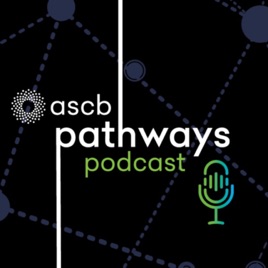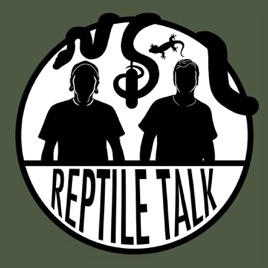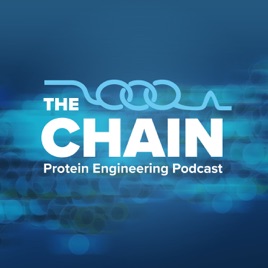
Advertise on podcast: the bioinformatics chat
Rating
4.8 from
Country
This podcast has
70 episodes
Language
Publisher
Explicit
No
Date created
2017/04/16
Average duration
53 min.
Release period
89 days
Description
A podcast about computational biology, bioinformatics, and next generation sequencing.
Podcast episodes
Check latest episodes from the bioinformatics chat podcast
Prioritizing drug target genes with Marie Sadler
2023/12/21
In this episode, Marie Sadler talks
about her recent Cell Genomics paper, Multi-layered genetic approaches to
identify approved drug targets.
Previous studies have found that the drugs that target a gene linked to the
disease are more likely to be approved. Yet there are many ways to define what
it means for a gene to be linked to the disease. Perhaps the most
straightforward approach is to rely on the genome-wide association studies (GWAS) data,
but that data can also be integrated with quantitative trait loci (eQTL or pQTL) information
to establish less obvious links between genetic variants (which often lie
outside of genes) and genes. Finally, there’s exome sequencing, which, unlike
GWAS, captures rare genetic variants. So in this paper, Marie and her
colleagues set out to benchmark these different methods against one another.
Listen to the episode to find out how these methods work, which ones
work better, and how network propagation can improve the prediction accuracy.
Links:
Multi-layered genetic approaches to identify approved drug targets
(Marie C. Sadler, Chiara Auwerx, Patrick Deelen, Zoltán Kutalik)
Marie on GitHub
Interview with Mariana Mamonova, the Ukrainian marine infantry combat medic who spent 6 months in russian captivity while pregnant
Thank you to Jake Yeung, Michael Weinstein, and other Patreon members for supporting this episode.
more
Suffix arrays in optimal compressed space and δ-SA with Tomasz Kociumaka and Dominik Kempa
2023/09/29
Today on the podcast we have Tomasz Kociumaka and Dominik Kempa,
the authors of the preprint
Collapsing the Hierarchy of Compressed Data Structures: Suffix Arrays in Optimal Compressed Space.
The suffix array is one of the foundational data structures in bioinformatics,
serving as an index that allows fast substring searches in a large text.
However, in its raw form, the suffix array occupies the space proportional to (and
several times larger than) the original text.
In their paper, Tomasz and Dominik construct a new index, δ-SA, which on the
one hand can be used in the same way (answer the same queries) as the suffix
array and the inverse suffix array, and on the other hand, occupies the space
roughly proportional to the gzip’ed text (or, more precisely, to the measure δ
that they define — hence the name).
Moreover, they mathematically prove that this index is optimal, in the sense
that any index that supports these queries — or even much weaker queries, such
as simply accessing the i-th character of the text — cannot be significantly
smaller (as a function of δ) than δ-SA.
Links:
Collapsing the Hierarchy of Compressed Data Structures: Suffix Arrays in Optimal Compressed Space (Dominik Kempa, Tomasz Kociumaka)
Thank you to Jake Yeung and other Patreon members for supporting this episode.
more
Phylogenetic inference from raw reads and Read2Tree with David Dylus
2023/08/28
In this episode,
David Dylus talks about
Read2Tree,
a tool that builds alignment matrices and phylogenetic trees from raw
sequencing reads.
By leveraging the database of orthologous genes called OMA, Read2Tree bypasses traditional, time-consuming steps such as genome assembly, annotation and all-versus-all sequence comparisons.
Links:
Inference of phylogenetic trees directly from raw sequencing reads using Read2Tree
(David Dylus, Adrian Altenhoff, Sina Majidian, Fritz J. Sedlazeck, Christophe Dessimoz)
Background story
Read2Tree on GitHub
OMA browser
The Guardian’s podcast about Victoria Amelina and Volodymyr Vakulenko
If you enjoyed this episode, please consider supporting the podcast on Patreon.
more
AlphaFold and variant effect prediction with Amelie Stein
2023/07/29
This is the third and final episode in the AlphaFold series, originally recorded on February 23, 2022,
with Amelie Stein, now an associate professor at the University of Copenhagen.
In the episode, Amelie explains what 𝛥𝛥G is, how it informs us
whether a particular protein mutation affects its stability, and how AlphaFold 2
helps in this analysis.
A note from Amelie:
Something that has happened in the meantime is the publication of methods
that predict 𝛥𝛥G with ML methods, so much faster than Rosetta. One of
them, RaSP, is from our group, while
ddMut is from another subset of
authors of the AF2 community assessment paper.
Other links:
A structural biology community assessment of AlphaFold2 applications
(Mehmet Akdel, Douglas E. V. Pires, Eduard Porta Pardo, Jürgen Jänes, Arthur O. Zalevsky, Bálint Mészáros, Patrick Bryant, Lydia L. Good, Roman A. Laskowski, Gabriele Pozzati, Aditi Shenoy, Wensi Zhu, Petras Kundrotas, Victoria Ruiz Serra, Carlos H. M. Rodrigues, Alistair S. Dunham, David Burke, Neera Borkakoti, Sameer Velankar, Adam Frost, Jérôme Basquin, Kresten Lindorff-Larsen, Alex Bateman, Andrey V. Kajava, Alfonso Valencia, Sergey Ovchinnikov, Janani Durairaj, David B. Ascher, Janet M. Thornton, Norman E. Davey, Amelie Stein, Arne Elofsson, Tristan I. Croll & Pedro Beltrao)
A crime in the making: Russia’s atrocities — the podcast episode about the Olenivka prison massacre
If you enjoyed this episode, please consider supporting the podcast on Patreon.
more
AlphaFold and shape-mers with Janani Durairaj
2023/07/10
This is the second episode in the AlphaFold series, originally recorded on February 14, 2022,
with Janani Durairaj, a postdoctoral
researcher at the University of Basel.
Janani talks about how she used shape-mers and topic modelling to discover
classes of proteins assembled by AlphaFold 2 that were absent from the Protein
Data Bank (PDB).
The bioinformatics discussion starts at 03:35.
Links:
A structural biology community assessment of AlphaFold2 applications
(Mehmet Akdel, Douglas E. V. Pires, Eduard Porta Pardo, Jürgen Jänes, Arthur O. Zalevsky, Bálint Mészáros, Patrick Bryant, Lydia L. Good, Roman A. Laskowski, Gabriele Pozzati, Aditi Shenoy, Wensi Zhu, Petras Kundrotas, Victoria Ruiz Serra, Carlos H. M. Rodrigues, Alistair S. Dunham, David Burke, Neera Borkakoti, Sameer Velankar, Adam Frost, Jérôme Basquin, Kresten Lindorff-Larsen, Alex Bateman, Andrey V. Kajava, Alfonso Valencia, Sergey Ovchinnikov, Janani Durairaj, David B. Ascher, Janet M. Thornton, Norman E. Davey, Amelie Stein, Arne Elofsson, Tristan I. Croll & Pedro Beltrao)
The Protein Universe Atlas
What is hidden in the darkness? Deep-learning assisted large-scale protein family curation uncovers novel protein families and folds (Janani Durairaj, Andrew M. Waterhouse, Toomas Mets, Tetiana Brodiazhenko, Minhal Abdullah, Gabriel Studer, Mehmet Akdel, Antonina Andreeva, Alex Bateman, Tanel Tenson, Vasili Hauryliuk, Torsten Schwede, Joana Pereira)
Geometricus: Protein Structures as Shape-mers derived from Moment Invariants on GitHub
The group page
The Folded Weekly newsletter
A New York Times article about the Kramatorsk missile strike. The Instagram video, part of which you can hear at the beginning of the episode, appears to have been deleted.
If you enjoyed this episode, please consider supporting the podcast on Patreon.
more
AlphaFold and protein interactions with Pedro Beltrao
2023/06/21
In this episode, originally recorded on February 9, 2022,
Roman talks to Pedro Beltrao
about AlphaFold, the software developed by DeepMind that predicts a protein’s
3D structure from its amino acid sequence.
Pedro is an associate professor at ETH Zurich and the coordinator of
the structural biology community assessment of AlphaFold2 applications project,
which involved over 30 scientists from different institutions.
Pedro talks about the origins of the project,
its main findings, the importance of the confidence metric that AlphaFold
assigns to its predictions, and Pedro’s own area of interest — predicting
pockets in proteins and protein-protein interactions.
Links:
A structural biology community assessment of AlphaFold2 applications
(Mehmet Akdel, Douglas E. V. Pires, Eduard Porta Pardo, Jürgen Jänes, Arthur O. Zalevsky, Bálint Mészáros, Patrick Bryant, Lydia L. Good, Roman A. Laskowski, Gabriele Pozzati, Aditi Shenoy, Wensi Zhu, Petras Kundrotas, Victoria Ruiz Serra, Carlos H. M. Rodrigues, Alistair S. Dunham, David Burke, Neera Borkakoti, Sameer Velankar, Adam Frost, Jérôme Basquin, Kresten Lindorff-Larsen, Alex Bateman, Andrey V. Kajava, Alfonso Valencia, Sergey Ovchinnikov, Janani Durairaj, David B. Ascher, Janet M. Thornton, Norman E. Davey, Amelie Stein, Arne Elofsson, Tristan I. Croll & Pedro Beltrao)
Pedro’s group at ETH Zurich
If you enjoyed this episode, please consider supporting the podcast on Patreon.
more
Enformer: predicting gene expression from sequence with Žiga Avsec
2021/11/09
In this episode, Jacob Schreiber interviews Žiga Avsec about
a recently released model, Enformer. Their discussion begins with life
differences between academia and industry, specifically about how research
is conducted in the two settings. Then, they discuss the Enformer model,
how it builds on previous work, and the potential that models like it have
for genomics research in the future. Finally, they have a high-level discussion
on the state of modern deep learning libraries and which ones they use in their
day-to-day developing.
Links:
Effective gene expression prediction from sequence by integrating long-range interactions (Žiga Avsec, Vikram Agarwal, Daniel Visentin, Joseph R. Ledsam, Agnieszka Grabska-Barwinska, Kyle R. Taylor, Yannis Assael, John Jumper, Pushmeet Kohli & David R. Kelley )
DeepMind Blog Post (Žiga Avsec)
If you enjoyed this episode, please consider supporting the podcast on Patreon.
more
Bioinformatics Contest 2021 with Maksym Kovalchuk and James Matthew Holt
2021/09/27
The Bioinformatics Contest is back this year, and we are back to discuss
it!
This year’s contest winners
Maksym Kovalchuk (1st prize) and
Matt Holt (2nd prize)
talk about how they approach
participating in the contest and what strategies have earned them the top
scores.
Timestamps and links for the individual problems:
00:10:36 Genotype Imputation
00:21:26 Causative Mutation
00:30:27 Superspreaders
00:37:22 Minor Haplotype
00:46:37 Isoform Matching
Links:
Matt’s solutions
Max’s solutions
If you enjoyed this episode, please consider supporting the podcast on Patreon.
more
Steady states of metabolic networks and Dingo with Apostolos Chalkis
2021/07/28
In this episode, Apostolos Chalkis presents sampling steady
states of metabolic networks as an alternative to the widely used flux balance
analysis (FBA). We also discuss dingo, a
Python package written by Apostolos that employs geometric random walks to
sample steady states. You can see dingo in action
here.
Links:
Dingo on GitHub
Searching for COVID-19 treatments using metabolic networks
Tweag open source fellowships
This episode was originally published on the Compositional podcast.
If you enjoyed this episode, please consider supporting the podcast on Patreon.
more
3D genome organization and GRiNCH with Da-Inn Erika Lee
2021/06/23
In this episode, Jacob Schreiber interviews Da-Inn Erika Lee about
data and computational methods for making sense of 3D genome structure. They
begin their discussion by talking about 3D genome structure at a high level
and the challenges in working with such data. Then, they discuss a method
recently developed by Erika, named GRiNCH, that mines this data to
identify spans of the genome that cluster together in 3D space and
potentially help control gene regulation.
Links:
GRiNCH: simultaneous smoothing and detection of topological units of genome organization from sparse chromatin contact count matrices with matrix factorization (Da-Inn Lee and Sushmita Roy)
GRiNCH Project Page
In silico prediction of high-resolution Hi-C interaction matrices (Shilu Zhang, Deborah Chasman, Sara Knaack, and Sushmita Roy)
If you enjoyed this episode, please consider supporting the podcast on Patreon.
more
Differential gene expression and DESeq2 with Michael Love
2021/05/12
In this episode, Michael Love joins us to talk about the differential gene
expression analysis from bulk RNA-Seq data.
We talk about the history of Mike’s own differential expression package,
DESeq2, as well as other packages in this space, like edgeR and limma, and the
theory they are based upon. Mike also shares his experience of being the
author and maintainer of a popular bioninformatics package.
Links:
Moderated estimation of fold change and dispersion for RNA-seq data with DESeq2
(Love, M.I., Huber, W. & Anders, S.)
DESeq2 on Bioconductor
Chan Zuckerberg Initiative: Ensuring Reproducible Transcriptomic Analysis with DESeq2 and tximeta
And a more comprehensive set of links from Mike himself:
limma, the original paper and limma-voom:
https://pubmed.ncbi.nlm.nih.gov/16646809/
https://www.ncbi.nlm.nih.gov/pmc/articles/PMC4053721/
edgeR papers:
https://www.ncbi.nlm.nih.gov/pmc/articles/PMC2796818/
https://www.ncbi.nlm.nih.gov/pmc/articles/PMC3378882/
The recent manuscript mentioned from the Kendziorski lab, which has a Gamma-Poisson hierarchical structure, although it does not in general reduce to the Negative Binomial:
https://doi.org/10.1101/2020.10.28.359901
We talk about robust steps for estimating the middle of the dispersion prior distribution, references are Anders and Huber 2010 (DESeq), Eling et al 2018 (one of the BASiCS papers), and Phipson et al 2016:
https://www.ncbi.nlm.nih.gov/pmc/articles/PMC3218662/
https://www.ncbi.nlm.nih.gov/pmc/articles/PMC6167088/
https://www.ncbi.nlm.nih.gov/pmc/articles/PMC5373812/
The Stan software:
https://mc-stan.org/
We talk about using publicly available data as a prior, references I mention are the McCall et al paper using publicly available data to ask if a gene is expressed, and a new manuscript from my lab that compares splicing in a sample to GTEx as a reference panel:
https://www.ncbi.nlm.nih.gov/pmc/articles/PMC3013751/
https://doi.org/10.1101/856401
Regarding estimating the width of the dispersion prior, references are the Robinson and Smyth 2007 paper, McCarthy et al 2012 (edgeR), and Wu et al 2013 (DSS):
https://pubmed.ncbi.nlm.nih.gov/17881408/
https://www.ncbi.nlm.nih.gov/pmc/articles/PMC3378882/
https://www.ncbi.nlm.nih.gov/pmc/articles/PMC3590927/
Schurch et al 2016, a RNA-seq dataset with many replicates, helpful for benchmarking:
https://www.ncbi.nlm.nih.gov/pmc/articles/PMC4878611/
Stephens paper on the false sign rate (ash):
https://www.ncbi.nlm.nih.gov/pmc/articles/PMC5379932/
Heavy-tailed distributions for effect sizes, Zhu et al 2018:
https://www.ncbi.nlm.nih.gov/pmc/articles/PMC6581436/
I credit Kevin Blighe and Alexander Toenges, who help to answer lots of DESeq2 questions on the support site:
https://www.biostars.org/u/41557/
https://www.biostars.org/u/25721/
The EOSS award, which has funded vizWithSCE by Kwame Forbes, and nullranges by Wancen Mu and Eric Davis:
https://chanzuckerberg.com/eoss/proposals/ensuring-reproducible-transcriptomic-analysis-with-deseq2-and-tximeta/
https://kwameforbes.github.io/vizWithSCE/
https://nullranges.github.io/nullranges/
One of the recent papers from my lab, MRLocus for eQTL and GWAS integration:
https://mikelove.github.io/mrlocus/
If you enjoyed this episode, please consider supporting the podcast on Patreon.
more
Proteomics calibration with Lindsay Pino
2021/04/21
In this episode, Lindsay Pino discusses the
challenges of making quantitative measurements in the field of proteomics.
Specifically, she discusses the difficulties of comparing measurements across
different samples, potentially acquired in different labs, as well as a method
she has developed recently for calibrating these measurements without the need
for expensive reagents. The discussion then turns more broadly to questions in
genomics that can potentially be addressed using proteomic measurements.
Links:
Talus Bioscience
Matrix-Matched Calibration Curves for Asssessing Analytical Figures of Merit in Quantitative Proteomics
(Lindsay K. Pino, Brian C. Searle, Han-Yin Yang, Andrew N. Hoofnagle, William S. Noble, and Michael J. MacCross)
If you enjoyed this episode, please consider supporting the podcast on Patreon.
more
Podcast reviews
Read the bioinformatics chat podcast reviews
Adam Klie
2022/06/05
Great breadth and exposition of cool topics!
I get a lot out of these podcasts! I’m a 3rd year PhD student studying bioinformatics and I feel that the breadth of these topics are giving me a much...
more
slinkerlee
2018/05/27
great podcast!
This podcast has great interviews and in-depth coverage of new tools and techniques.
Podcast sponsorship advertising
Start advertising on the bioinformatics chat & sponsor relevant audience podcasts
You may also like these life sciences Podcasts

4.8
104
693
Beyond Clean Podcast
Beyond Clean Podcast

5
3
14
ASCB's Pathways Podcast
American Society for Cell Biology

4.8
266
421
Talking Biotech with Dr. Kevin Folta
Colabra

4.9
91
123
Reptile Talk
Jeremy Turgeon and Rob Christian

1
1
185
Healthcare Goes Digital
Impetus Digital

4.6
41
110
AAAAI Podcast: Conversations from the World of Allergy
The American Academy of Allergy, Asthma & Immunology (AAAAI)

4.8
113
192
MSL Talk
Tom Caravela

5
23
227
Project Medtech
Project Medtech

4.9
222
372
Qiological Podcast
Michael Max

4.7
14
61
The Chain: Protein Engineering Podcast
Cambridge Healthtech Institute



